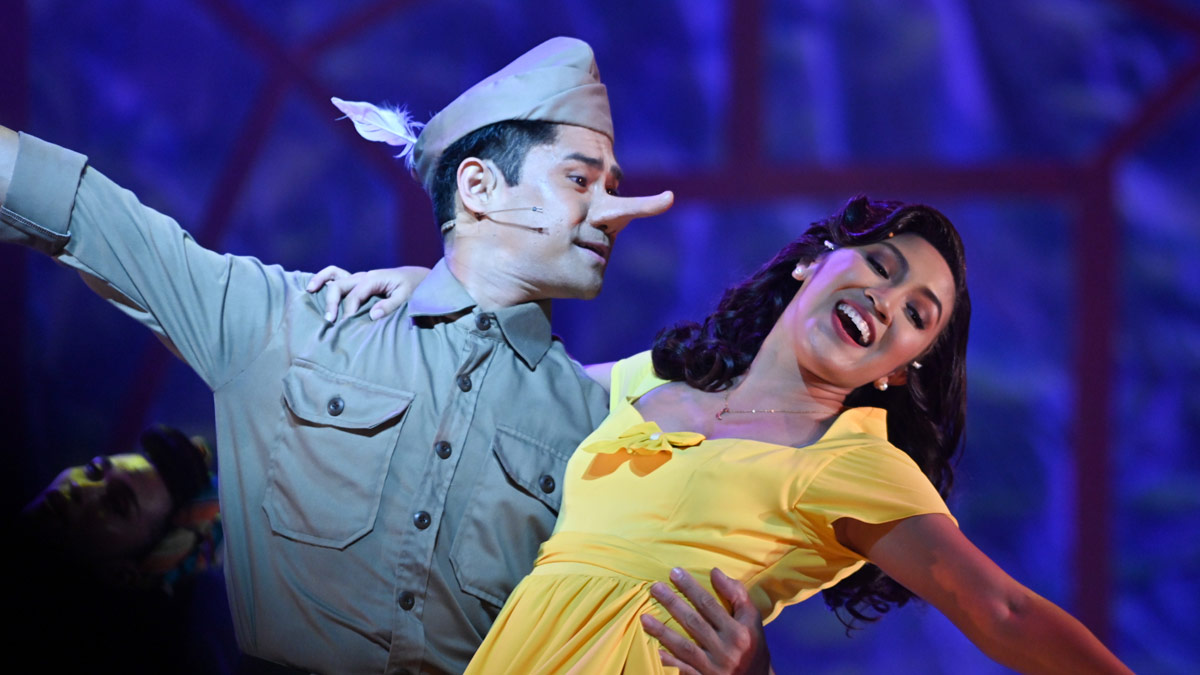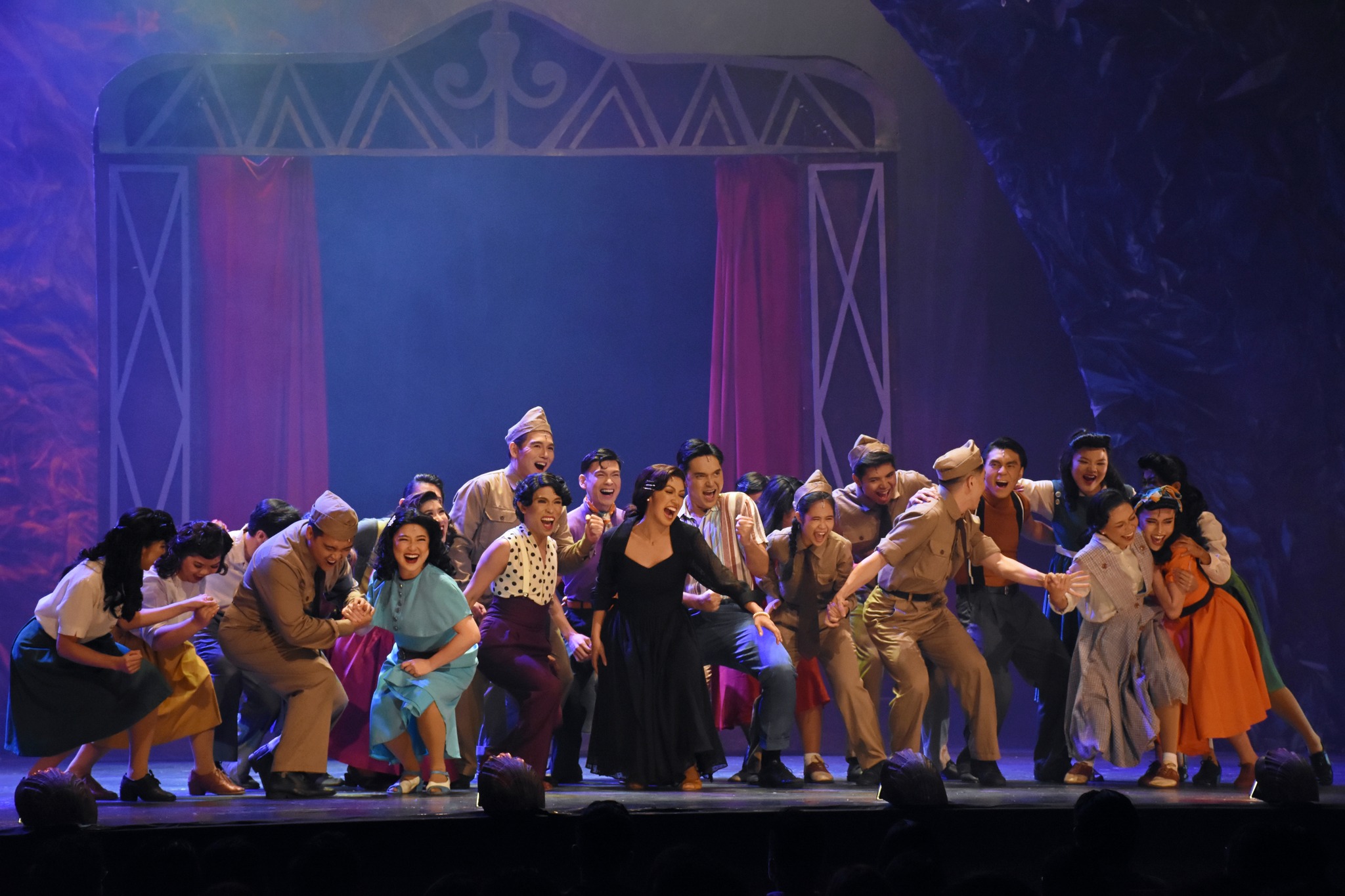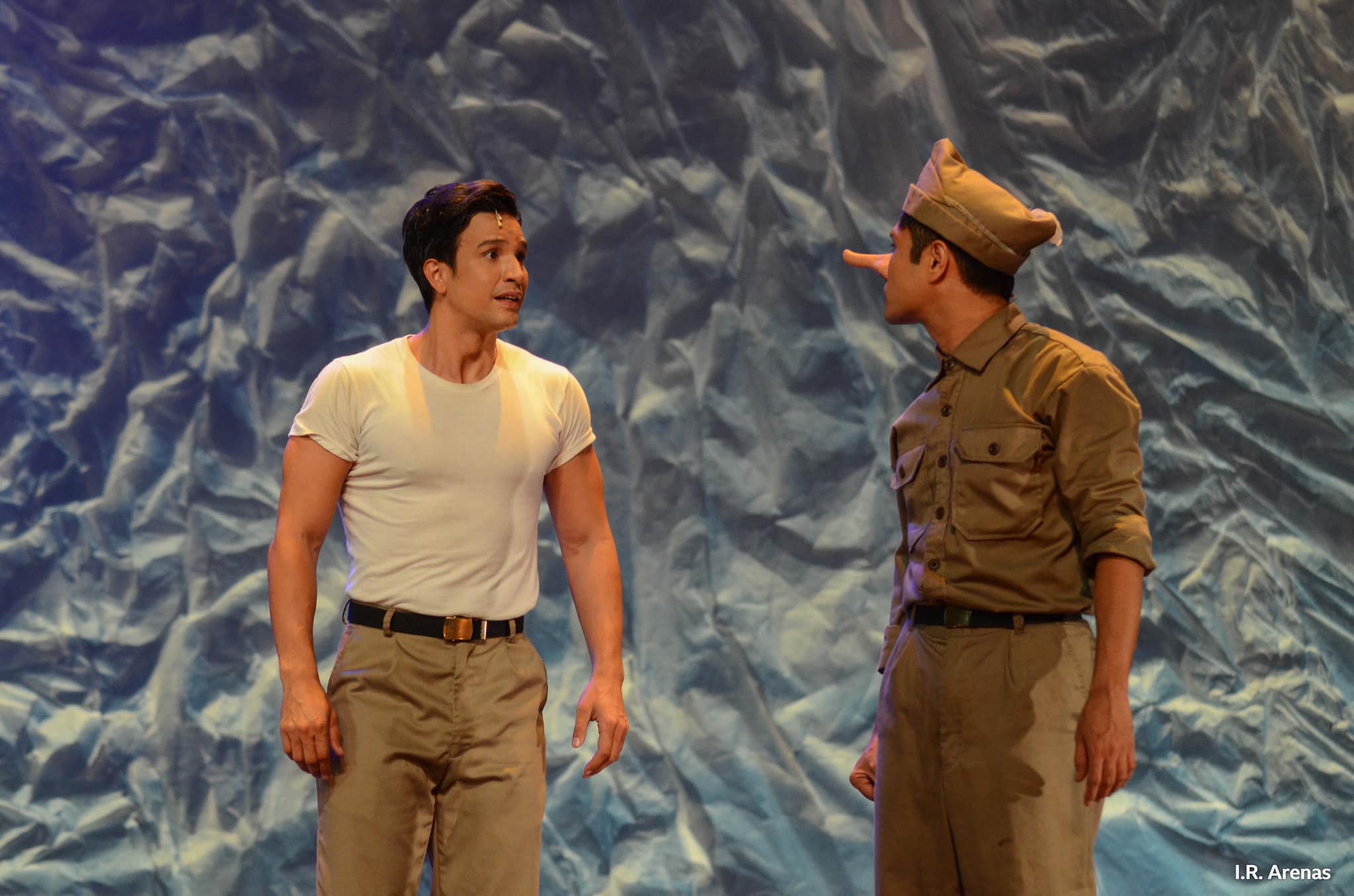by HJADOEYA V. CALICA

IN A world where patched-up syllables connect everyone, the simplest words are often the ones that are difficult to utter. But poetry gives people a way to express themselves well.
The power of poetry to convey feelings restrained by insecurities was showcased in Mula sa Buwan, a musical play directed by Pat Valera based on Soc Rodrigo’s Filipino translation of Edmond Rostand’s Cyrano de Bergerac. It revolves around the story of Roxanne (Gab Pangilinan), Cyrano (Myke Solomon), and Christian (Markki Stroem).
Cyrano is a poet who feeds off applause from his colleagues for his confidence. Yet, he feels different because of his nose, a taboo in the play they avoid at all costs. Meanwhile, Christian, the opposite of Cyrano, feels deficient in everything except his physical appearance. Both characters’ physical appearances overshadow their words and add depth to the character that they wish to present to Roxanne.
The play’s turning point was the ending monologue of Roxanne, where the follow-spot technique was used, embodying the feeling of grief and longing. Pangilinan’s voice during her performance of “Ang Sabi Nila” burst out every emotion Roxanne felt during the falling action.
Through the original songs of composer and co-lyricist William Edwin Manzano, Mula sa Buwan solidified its rarity as a play. Every word in the play is laid out for the audience with the accompaniment of the melody’s instrumentals. The heartfelt music presented by the actors captured the genuineness of the characters’ feelings.
Mula sa Buwan started with a humorous perspective of life as the song “Ang Tanghalang Ito” was complemented by a 1940s-inspired dance routine, which was fitting with the play’s time setting.

From the fresh perspective of the platonic and romantic relationships of the characters, it shifted to the integration of fiction and reality by fusing the two in understanding the impact of the social issues manifested to the characters—it forced them to mature instantly and lose what was once in their possession.
However, though it merits discussion, women’s empowerment was only tackled in passing. It was limited to a single dialogue between Roxanne and Maximo (MC Dela Cruz). This could have been a relevant issue to cover, considering how Maximo looks down on Roxanne’s capabilities to decide for her life.
The shift from light scenes to drama was evident not only in the characters’ demeanor but also in other elements of the play, like the wardrobe’s palette.
The characters’ costumes were bright with ruffles and tassels, fittingly adopting 1940s trends. This was also applied in their make-up and hairstyles, with slicked-back hair for men and curled hair for women.
With the use of advanced technology and great audio quality, Mula sa Buwan was able to narrate Roxanne, Cyrano, and Christian’s story. The music’s pace, rhythm, and notes were perfectly incorporated with the consideration of the story of the play.

Although the set was simple, every property on the stage served its purpose and not merely as a decoration. The minimal use of properties enabled the audience to focus on the scenes. The play concentrated on the lighting of the stage, which reflected the mood of every scene.
Since the play was professionally shot, different camera angles were used to highlight the dance, facial expressions, and various lighting ranges to fully incorporate suspense for the viewers.
Mula sa Buwan was able to leave an impression about how powerful adoration and words are when combined. The characters’ poetic lines were not merely telling the story; what they enunciated brought into life the action they meant.
The gripping effect it had on the audience was an urge to go inside their world and change the flow of the story, especially during the climax of the story where Roxanne, Cyrano, and Christian’s chaotic story began to unfold with all the revelations they had to admit to each other and themselves.
Mula sa Buwan proves that literature could capture unspoken feelings of a person as if the play could read the audience’s thoughts. What separates Mula sa Buwan from other plays is how it brings to life the characters’ stories through the harmonic melody of poetry and its capability to free imprisoned and unspoken words. F



